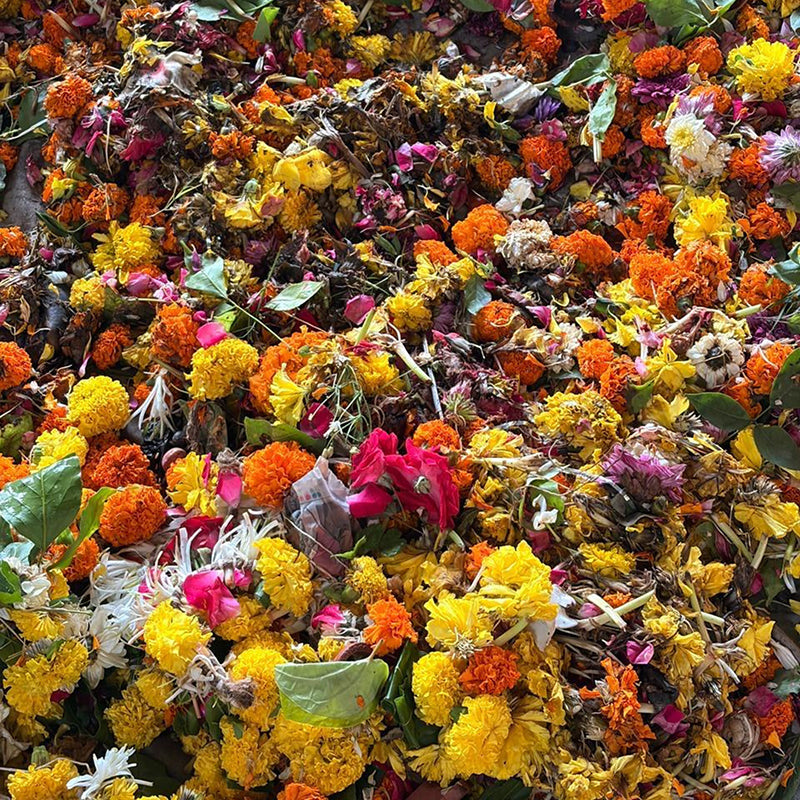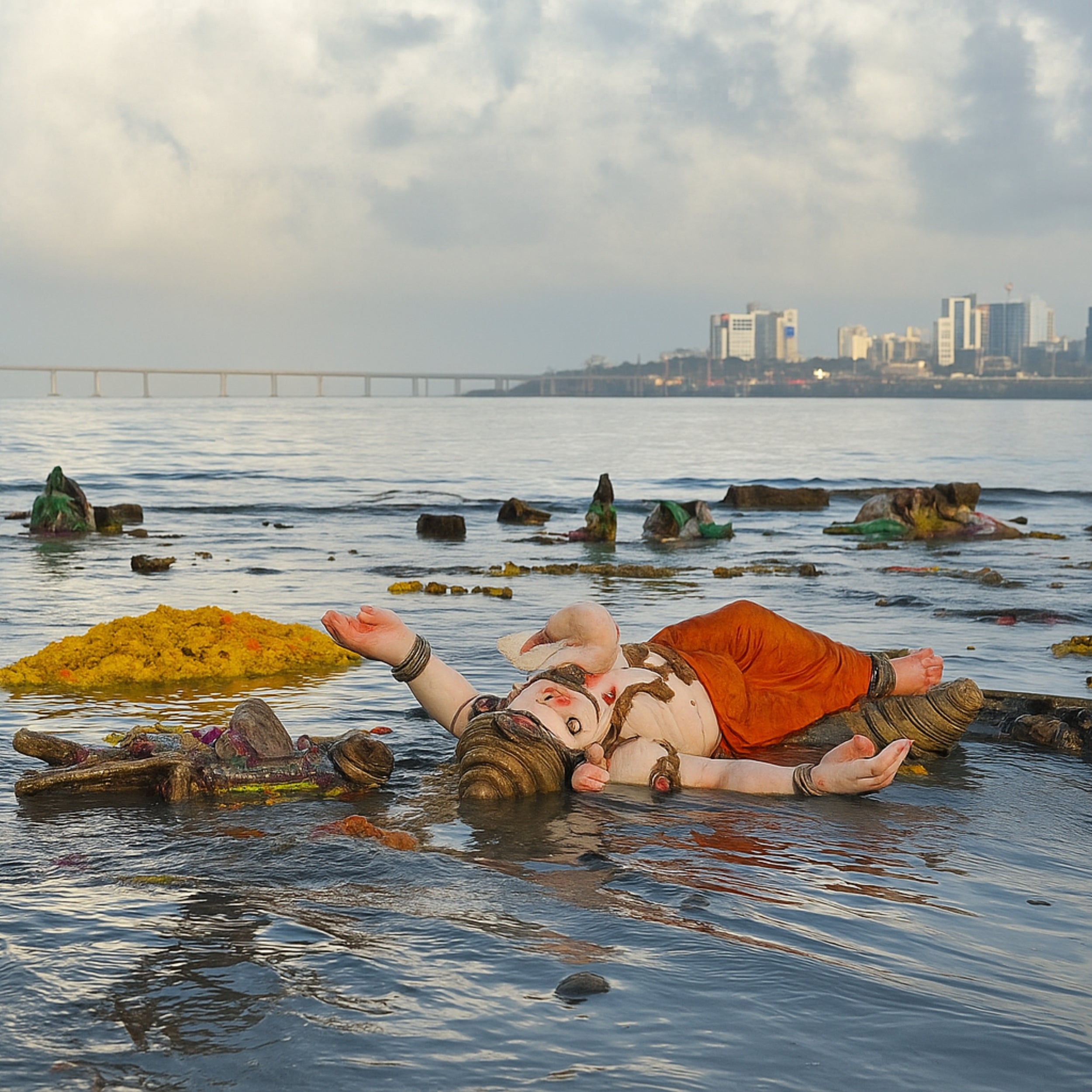
The Sacred Burden of Floral Waste
In India, flowers are more than decoration; they embody purity, love, and devotion. Offered daily at over 3.2 million places of worship, they are central to rituals but also generate nearly 8 million tonnes of waste each year. Most ends up polluting rivers, clogging drains, or piling into landfills.
The problem peaks during festivals: Ganesh and Durga pandals overflow with marigolds and roses, weddings discard tonnes of decorations, and even household pujas add to the load. Floral markets too contribute daily waste from cuttings, surplus stock, and unsold flowers. What begins as devotion becomes a mounting environmental burden.
The impact is severe. Nearly 16% of river pollution comes from discarded flowers, with the Ganga, Yamuna, and others bearing the brunt. Pesticide-laden blooms leach chemicals into soil and water, while decomposing heaps trigger urban flooding and diseases. Yet less than 5% of floral waste is recycled today.
This paradox is striking: offerings of purity end in pollution. Finding sustainable ways to repurpose flowers is no longer optional, it is essential. Only then can every offering uphold the values of love and reverence, even beyond the ritual.

The Problem: PoP Idols and Environmental Pollution
Ganesh Chaturthi sees the immersion of lakhs of idols each year, but the rise of Plaster of Paris (PoP) idols has created an environmental crisis. Maharashtra alone generates over 4,500 tonnes of PoP idol waste annually, with Mumbai adding 675 tonnes from 1.5 lakh immersions (MPCB Report 2023).
Unlike clay idols that dissolve quickly, the PoP ones made from gypsum and reinforced with fibres, remain in water bodies for months. As it breaks down, it releases heavy metals like lead, cadmium, and mercury from paints, contaminating rivers, lakes, and coasts. This disrupts water chemistry, reduces oxygen levels, and suffocates aquatic life.
The impact extends further: mangroves are damaged, ecosystems destabilized, and toxic metals accumulate in the food chain, eventually reaching humans through seafood. Long-term risks include neurological disorders, kidney damage, and developmental issues in children.
What begins as devotion thus becomes an ecological hazard, showing how unregulated PoP idol immersions threaten biodiversity, water quality, and public health.
THE PROCESS

Collection at Source
Pushpam begins its journey right at various places of worship. Floral offerings, fruits, leaves, and stems are collected before they can pollute rivers or landfills. Dedicated collection drives are conducted at major festivals, daily temple rituals, weddings, and community events, ensuring that nothing sacred goes to waste.
Segregation and Drying
The collected offerings are checked for any contamination of plastic or other materials and sorted for drying including petals, stems, leaves, fruits. These are then naturally sun-dried in controlled environments.
Crushing and Grinding
Once dried, the flowers are gently crushed into fine particles. This step reduces volume and prepares the raw material for further transformation. Stems and harder waste are pulverized separately to maintain uniformity in texture.
Mixing and Binding
The crushed floral matter is blended with Pushpam’s proprietary binders — eco-friendly, non- toxic formulations. The mixture is as per the recipe and mixed thoroughly to avoid any lumps.
Moulding and Crafting
Women then hand-mould this mixture into products. Depending on the design, moulds are used for precision or handcrafted finishes are applied for traditional detailing.
Finishing and Detailing
After molding, the products are sun-cured and polished by hand. Artists add unique touches inspired by Indian art forms. Some products include printing celebrating the art forms.


